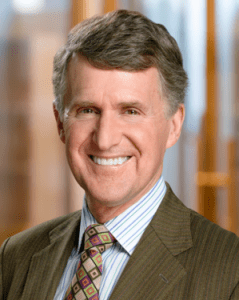
Rip Rapson. Photo courtesy of the Kresge Foundation
A few weeks ago, we had the opportunity to speak with Rapson, trace his experiences and the projects he conceived or championed over the years (some of which we’ve written about, but, not surprisingly, without his name attached to them) and drill into the opportunities and difficulties faced by a large philanthropic organization as it works to integrate its grant making interests with the way real communities operate: as dynamic entities with systems that fully integrate, even if they do so in a seriously dysfunctional way.
One interest Kresge has is in arts and culture, and we spent some extra time talking about the importance and role of arts and culture in community health and development.
Miriam Axel-Lute: We want to start off by talking about your history, and how you got into this work.
Rip Rapson: The thread actually stitches back quite a long way. When I first began my search for a career, I landed in the House of Representatives, working for Don Fraser, a congressman from Minneapolis. Fraser was deeply interested in how Congress could more effectively tie some of the energy and creativity in the innovation that was going on in the community. This was in the mid-1970s and he felt that Washington was drifting out of touch.
I ended up spending a lot of time with community-based housing organizations, arts and cultural organizations, and educational institutions. It was an extraordinary introduction for a young person right out of college to begin to see the complexities of how local work translates, or doesn’t translate, into federal policy.
After about four years, I went back to law school at Columbia, and then back to Minneapolis to work. In addition to a fairly traditional corporate law practice, I was able to do an enormous amount of pro bono work. I was at a firm that embraced that kind of commitment, and I represented a large number of community-based organizations, a battered women’s shelter, a number of environmental organizations, quite a few arts and cultural organizations, and some folks who were doing community development and housing.
After eight or nine years of law practice, I was asked by the mayor, who actually happened to be the congressman who had come back to Minneapolis, to move to City Hall and take on the role of deputy mayor. For the next four years, everything we did was based on issues of community development, community health, and helping encourage a different kind of relationship between City Hall and neighborhoods.
We started the Minneapolis Neighborhood Revitalization Program, an effort to take monies that have been generated by downtown tax increment districts, pool them, and redistribute them into neighborhoods. We coupled that with community-based decision-making in which each of Minneapolis’ 81 neighborhoods were given the wherewithal to develop community-based plans. I was responsible for formulating the budget on behalf of the city, so we were able to blend community priorities that required nontraditional funding for which we could tap the $400 million, or that simply involved trying to get our agencies to work differently.
It was an enormous learning experience about how community voice and community priorities can be reconciled and aligned with citywide municipal priorities.
At the end of four years, Fraser decided he was going to retire and I ran for mayor. I lost to a very good candidate, [but] it left me not quite sure of what to do next.
I got a call one day from the McKnight Foundation asking if I would be willing to continue some of the thinking that had come out of the neighborhood revitalization program, and apply them into aging suburban communities. It seemed sort of an odd request, but the more we looked at it, the more it was quite sensible because so many of the first-string suburbs in Minneapolis and St. Paul were experiencing many of the same indicators of decline and stress that center cities had gone through over the last 10 or 15 years.
But, they often were doing that with fewer financial resources, social service agencies, and cultural amenities. They often had less developed open space and park systems. It became a very interesting problem, and over the last 20 years it’s become an issue of considerable mainstream concern in the community development world. But then, it was a little bit edgy, and so I agreed to go to the University of Minnesota and start a project that looked at how these communities were coping, and what tools they might need in order to get out in front of some of those issues. We assembled a team of architects, community development specialists, economists, the whole suite of different disciplines to address those issues.
In the middle of that project, or as it turned out at the tail end of that project, I got a call from the McKnight Foundation, who [was looking for] someone who understood different sectors to help them navigate some of the complexities that the foundation was hoping to take on in terms of metropolitan growth, environmental stewardship, and arts and cultural development.
So, I went to McKnight, and for six years just had a ball. I got the call from Kresge in 2006, and have been in Detroit for the last 10 years working on probably all of those issues that constitute my background.
Harold Simon: What have been the big changes since the Neighborhood Revitalization Program?
The community development field, over the last 10 years or so years, has changed in its embrace of the innate interconnectivity of the different field disciplines.
It used to be that we thought we could do an engineering transportation intervention and not worry too much about community engagement, or other sort of related disciplines. I think that is less the case [now]. People in the community development space, and in city halls, understand that you simply have to inter-braid these systems in order to have them endure.
The second is the increasing recognition and embrace of having to work across sectors. We had quite a raging debate for the better part of a decade about whether nonprofits should behave like for-profit organizations, whether they should work together, or whether it somehow tarnished one sector to begin looking more like the other.
Those days are long past. The community development field recognizes that all of the sectors have to shape-shift, and we’ve seen that with remarkable acuteness here in Detroit. Philanthropy has helped usher a new approach to regional transit, traditionally a public sector issue. The public sector is increasingly looking to the private banking community to try to figure out how to deal with issues of foreclosure and mortgage affordability. The private sector is increasingly looking to the nonprofit sector to help it manage public space and civic comments.
The fourth piece is that we are grounded in issues of opportunity and trying to understand how to improve life outcomes for folks who are marginalized, or who don’t have all of the advantages of mainstream America. Philanthropy is an interesting vehicle to respond to both of these changes.
Axel-Lute: You talked about the Neighborhood Revitalization Program and letting local folks drive the agenda. How do you balance that with bringing in the perspective you have from having that broader view?
When we were beginning to design the Neighborhood Revitalization Program, it was one thing to have this big pool of money, but it was another to figure out what happens when a neighborhood develops its neighborhood plan, and it calls for a community school or a police precinct substation. How do you move that into the decision-making apparatus of a public sector?
I thought, “Why don’t we get all of the foundations in Minneapolis around the table and see whether there might be some discretionary money, expertise, and connections to broader resources that would help us figure this out?” I could not get the foundations to agree. It was humorous in retrospect, because it seems like such a time warp. They couldn’t imagine participating in what was essentially a public process.
I’ll never forget that one of the most interesting neighborhoods in Minneapolis lies along Lake Street. It was home to many immigrant communities that have emerged in Minneapolis over the last 20 years.
Hennepin County wanted to repave Lake Street, but they were going to obliterate the avenue in order to do it. I met with the neighborhood folks and we went out and got Project for Public Spaces [to help]. They had two or three highly skilled traffic engineers on their staff. And we essentially underwrote the ability of Project for Public Spaces to be the counterweight for the community to the county. Equipped with the right level of expertise, we thought there could be a conversation in which traffic engineers didn’t try to force computer programs down the throats of the community, and a reasoned and intelligent conversation could take place.
It worked. The community brought enormous wisdom and insight about the nuance of what happens on the street, and how the street needed to work. This notion of the different sectors leaning into community problem-solving makes sense. I don’t think it means that the community is always right, but it sure doesn’t mean that the public sector is always right, either. Philanthropy can help reset the table in a way that makes sure the most thoughtful, balanced, well-informed options are on the table.
Axel-Lute: How does arts and culture work play into Kresge’s over-arching goal about increasing opportunity for low-income people?
[On] University Avenue [in Minneapolis], you have a wonderful example of Springboard for the Arts developing something called the Irrigate Project, which was an attempt to think about how a large public works project, a light rail line that would connect downtown Minneapolis and downtown St. Paul, could be done in a way that didn’t repeat the mistakes of the urban redevelopment period. When the Green Line plans were announced, it was just sort of inherently a difficult problem. You’re tearing up sidewalk. You’re putting in track. It’s just hugely disruptive. And so, the Springboard for the Arts organization said why don’t we think about using arts and culture to help everybody think more creatively about how to come at this project? We can’t change the engineering standards, per se, but we can figure out ways to enliven the street during the construction. We can figure out opportunities to elevate issues of community voice and community heritage along the route to ensure that those aren’t just lost.
And over the next two years, Irrigate Arts did exactly that. I mean, not only did they enliven the streetscape and call attention to the fact that there were these vibrant, interesting, small businesses all along the avenue, but they also helped the public works folks come at the work differently. They held their public meetings in a different way. They engaged community voice in a different way. They figured out different ways to respect the neighborhood traditional ways of working.
Arts and culture can contribute in a central and material way to [solving] some of the most difficult problems that communities face. The public often tends to think that arts and culture is something that can help beautify or energize a process. But few public decision-makers internalize this as a way of being a little more creative about how you define and solve problems, and how you ensure community engagement.
I look at Detroit and think about how we’re coming at these really difficult issues of blighted and abandoned land. You can’t understand Detroit without understanding how central the arts and cultural community has been to the imaginative reuses of those properties. How do you move some of those properties from the debit side of the ledger to the asset side? It’s become so essential to how Detroit thinks about its future that we’ve done a little bit of what I hope more and more communities will do, which is to internalize arts and culture in the public problem-solving realm.
Axel-Lute: How do we communicate the outcomes of having art involved in this work?
Rocco Landesman was selected as the chair of the National Endowment for the Arts five years ago. I asked him this question. I said, Rocco, it just seems to me that we have so many examples of this. I mean, you almost can’t go anywhere in America without some really interesting example of a building being reclaimed and repurposed for arts, or a mural project, or a youth arts project. I mean, just all over America, rural, urban, everything in between. And he kind of smiled, and he said, and if at some point that happens in every congressional district in America, and if we do a good job of telling that story, we will begin creating that kind of critical mass that will really tip the conversation. And I said, well, I agree with that, but how about the data, and how about the quantitative elements of all of this? Isn’t that what will tip the scales?
And he just laughed. He wore these big cowboy boots, and he stood up, and he pounded the floor, and he said, you know what? I walk into every congressional office in the United States House of Representatives, and not one asks me about the data. They all want to know a story about what happened in one of their neighborhoods, one of their communities, one of their cities.
Is there something between the highly rigorous, systematized generation of data about how many dollars per square inch an arts activity generates and all of these millions of points of light? When are the data important? When are the stories important? How do you aggregate the stories? What are the patterns of the stories? The Lake Street example was a technical engineering challenge. Who would have thought the arts would have helped crack the nut?
If ArtPlace is successful, it will have become the leading edge of how you aggregate some of these experiences, how you tell stories a little bit more effectively, and how we begin thinking about the quantification of some of this.
But, when I was sitting in the mayor’s office [in Minneapolis], I [asked the] Dayton Hudson [Foundation] to invest in a process that would begin time-limited citywide conversation about the role of arts in helping shape the daily routines of community life. [And they] gave us this big check to run something called Culture Talks. I mention this because the very first conversation we had was with Walter Dziedzic, [who] represented the most conservative ward in Minneapolis. He was this big, tough, bear of a man who was a complete skeptic about the arts. He just thought this was nonsense. He actually hauled me in front of the city council committee to explain why in heaven’s name we would accept a grant like this.
So, I said, well, Walter, could we have the very first conversation in your ward, and he kind of grumbled and said all right, all right. So, we had it. It was at his Ukrainian church where he went every Sunday. We were able to identify the woman who sewed the vestments, the man who had done the mural painting on the altar, the three women, who every year created the Ukrainian Easter eggs. We got the choir director. You get the drift.
And Dziedzic walked in and saw these13 people in his congregation, and I said something to the effect of “I want to introduce you to your arts and cultural community, Walter.” And they all talked about how art became central to the way this Ukrainian church practiced, and of course he was toast; he became the biggest single advocate of how arts and culture sort of shaped community life. Now, I could have brought him all sorts of data, I suppose, but, having him sit with 13 or 14 of his congregation members talking about Ukrainian eggs and choral concerts, was really quite wonderful.
Simon: Does Kresge mostly seek out established organizations already working with arts and culture and try to expand their capacity?
What both ArtPlace and Kresge are trying to do is understand where there is an opening for this kind of work and to reinforce it. Can we discern people who are behaving this way, and can we provide capital that permits them to grow and institutionalize in multiple ways to ensure that the work continues? Also, can we begin discerning patterns of practice that could ultimately convince people who aren’t working this way that they [should] give it a shot? It’s this complicated sort of dance between trying to reinforce those who are already doing it, and then encouraging other people to at least consider the possibility of doing it, whatever the “it” is.
It’s not so much trying to understand discrete products that organizations are putting into play as it is more a process of problem-solving that these organizations are bringing to a community. How they’re working, how they engage their sectors, how they cross-stitch across disciplines, how they engage community, and how they balance the ephemeral beneficial impact with long-term institutional take-up of the work? All of these questions are ones that we’re trying to explore with these organizations.
Simon: What do you think about long-term financial commitments?
Often foundations shy from anything that seems to resemble a guarantee of permanent support. But, somewhere between that and the capricious is where the sweet zone is. How long does it take before these kinds of processes take hold?
And part of that may be who are the other partners who might, over time, become involved. Part of it is how much of this can become self-supporting in one way or another, whether it’s sidebar revenue generation, or it simply becomes so integral to the way an organization sees its work that it is fully internalized and digested within the organization. There are lots of ways to make sure these don’t flare up, burn off, and never be seen again.
On the other hand, some of these activities probably should burn off. In these early stages of support from ArtPlace and Kresge, and the creative placemaking space, we need not insist that every form of support be carried out over the long-term.
Foundations need to be prepared to stick with the support long enough for it to take hold in whatever form, but I think we also ought not to be formulaic about our expectation that, in all circumstances, this has to be something that is baked in for the eternity of the organization.
Simon: It sounds like your approach is more like a venture capitalist than a short-term investor.
I hope so. The short-term investment doesn’t make a lot of sense to me absent a long-term frame. Now, a short-term investment may be all that’s required from an institution like Kresge or ArtPlace, but I think that would be the case only if there is a longer-term vision into which that short-term investment fits.
Simon: In the long-term, do you see a broader integration?
One of the most fun examples is something called Fresh, Local, and Equitable. It’s essentially an attempt by our health team to begin building out part of its portfolio that focuses on access to healthy foods, and to make sure that low-income folks can connect readily to regional food hubs, public markets, and community-based food production.
We were asked to think about using arts and culture to engage people more directly in issues of fresh food access, and how arts and culture becomes a form of healthy community development.
It’s a simple, but complicated concept. When they developed the [request for proposal], we had 500 applicants come in. It’s the highest response we’ve ever had. It was something that we didn’t quite understand fully. Is it just offering arts and cultural activities as a way to draw people to public markets? Of course not. It’s 10 million different things. The response was mind-bending in its creativity.
We were so proud of ourselves because we thought we found something new and edgy at the intersection of these disciplines, only to find that the community was about five years in front of us. One of the things that I hope will be definitional to Kresge over these next half-dozen years is how we can inter-braid these systems across the entire organization, and then, in turn, inter-braid them with investment tools.
Simon: Could you talk about the role of community organizing and community engagement in the integration of both arts and culture, and community development?
Community organizing and community engagement is always about trying to create a different set of conditions and pre-conditions on the ground that will endure. People don’t want to organize just for the moment. If you really want arts and culture to be more integral to public decision-making, or if you really want there to be a meaningful conversation at a community level about the differential impacts of climate change on low-income places, organizing is a long-term, slow, constantly iterative process. These two programs have more to do with the elevation of community voice, community identity, and community problem-solving tools than almost any of our programs.
Simon: Wayne Meyer, who I’ve always thought was one of the most innovative and visionary folks in the community development field, started an arts fund at New Jersey Community Capital, and I’m sure you know all about it since Kresge gave $2.5 million to this fund. What do you see the role of that kind of fund in the broader context of the work you’re doing?
When we developed our social investments practice four or five years ago, there was sort of a natural gravitation, whether it was through PRIs, linked deposits, or guarantees, toward loans and transactions that can be secured in conventional ways.
We [started] an early fund to create the co-location of health clinics and affordable housing, because it was realistic. We did a series of transactions in Detroit that were secured by commercial properties, et cetera. I remember the team saying fairly early on, “We’d love to work with arts and culture. We’d love to work with your new environmental piece. But, because it’s so rooted in this sort of community problem-solving process, we don’t really understand how you would do it.”
That framed the challenge. How do you take non-grant capital, even if it’s not a new source, and put it to work without compromising the objectives that the arts and culture program has identified. There are creative responses. There are crossover paths. They’re not strictly analogous as you move from housing into arts and culture, but there are some parallels.
And as much as anything, it’s emphasizing that partners who have not been predictable participants in the arts and culture space, but who have been very predictable participants in the community development space, can get to work on these questions. Whether it’s Wayne or any number of other people, I think you’re seeing a level of creativity and insight being cross-walked into a domain that they don’t have deep experience in, nor does the field. The possibility of fertilizing new ideas, trying some stuff, seeing what works, and seeing what sticks is a little daunting for our social investments practice, because it takes them outside of the way they normally write up deal terms and deal sheets.
Simon: It seems that you’re doing some modeling for government. Is that too much?
I certainly don’t think it is too much. It may be a slower boat to leave the harbor. We have all sorts of early stage and energizing examples. A woman embedded in the St. Paul city government structure has done enormously creative table-setting for the public sector. It’s not just about who artists talk to to get a zoning waiver. This is a person who sits with department heads and asks questions about framing this up as a community engagement proposition, if the community is to be engaged. Could you imagine engaging with artists in a way that would enliven the process, but also begin cracking the code of traditional ways of thinking about a problem?
A deputy sheriff in Arizona is a poet and playwright. He’s an African-American man who grew up in Oakland, and was part of a fairly militant community-based set of organizations. One way or another, he found his way toward doing presentations around the differential impacts of the criminal justice system on African-American men.
So, there’s that sort of individual-by-individual, place-by-place way of helping government see its way to a different path. This was one of the animating purposes of ArtPlace—not only just to get foundations together in a room to create pooled funds to promote the kinds of integrative grant-making that we’ve been talking about, [but] also to get the federal government to work more cooperatively across lines. Rocco Landesman, chair of the National Endowment for the Arts, was the driver of ArtPlace. He approached Luis Urbiñas, the president of Ford, and me, and said, “I have this sort of dual purpose in mind. I want to get more money into creative place-making on the ground, and I want to figure out how we can make sure that the federal government is institutionalizing the role of arts and culture in its decision-making.”
That second goal might have seemed too big, too complicated, until Rocco asked if we would come and meet in the Roosevelt Room a year after we formed ArtPlace. All of the foundation presidents shuttled off to Washington , walked into a room with 12 cabinet secretaries, and spent the next two hours talking about the way they were beginning to think about integrating arts and culture into their work.
Secretary Tom Vilsack from agriculture was stunningly thoughtful about how in rural America, different forms of expression at a community level and different decision-making processes had been defined by and made more effective by the engagement of local artists and artisans. Kathleen Sebelius talked about how arts and culture was increasingly being integrated in their Medicare work. Shaun Donovan talked about how they figured out ways to get public housing residents more engaged through arts and culture.
It is one of those ways in which this is absolutely a long game. I think you’re beginning to see that at the federal government level in really profound ways. Will it survive the next administration? We’ll see, but I think this administration is doing its best to make sure that it endures.
Simon: Successful community development will often lead to displacement. Is that a real problem? If it is, how do you approach that?
Ari[el] Simon, our vice president of program, has been trying to work through how we think about issues of displacement. It was framed because our health team sought to support advocates on the ground who were making the case that displacement has immediate and severe health consequences.
Let’s take a housing-first approach to this. What are the tools that make sure that housing affordability stays within the reach of neighborhood residents? How do you create organizing strategies that elevate health sufficiently to make sure you’re not doing harm to people in terms of their health? This is not an arts and culture problem. It is a community development challenge. It really is part of a much, much longer conversation. I don’t think that we at Kresge are yet thoughtful enough about how you make sure all of these community systems are improved without fundamentally eliminating opportunity structures for people. It’s just infinitely complicated.
So, yes, we worry about it. I wish I could say we had a solution for it. But, it’s a priority of our organization to try to figure out.
Simon: What’s next for Kresge?
We will look at displacement and gentrification. We will look at the cross-platform that housing provides. But, I think the real next step for Kresge is to continue pushing as thoughtfully and as aggressively as we can on the integration of these systems in place. How does it affect grant making? How does it affect our work in PRIs? Do you increasingly have sort of one program, a community development program, rather than six programs which just happen to be the strands of community development? If so, what does that look like? How does an organization like Kresge organize its work to truly explore the intersection among these systems and reap the benefits of having these systems work in a mutually supportive and beneficial way?
That’s a really hard question. I don’t think any foundation in America has really tackled that. Community foundations are way ahead of this because they’re embedded in a place. And when you’re embedded in a place, you have to juggle, combine, and reconcile all of these systems simultaneously. But, what we’re trying to do is have our programs be less standing side-by-side and more mutually informing one another. That is a challenging piece of work. And when you throw the financial tools onto the mix, it becomes even more complex.
Thank you.

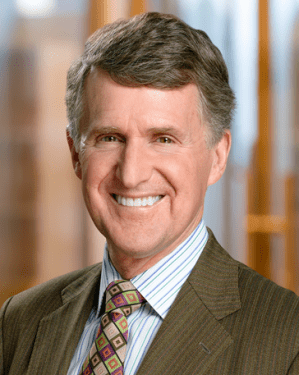

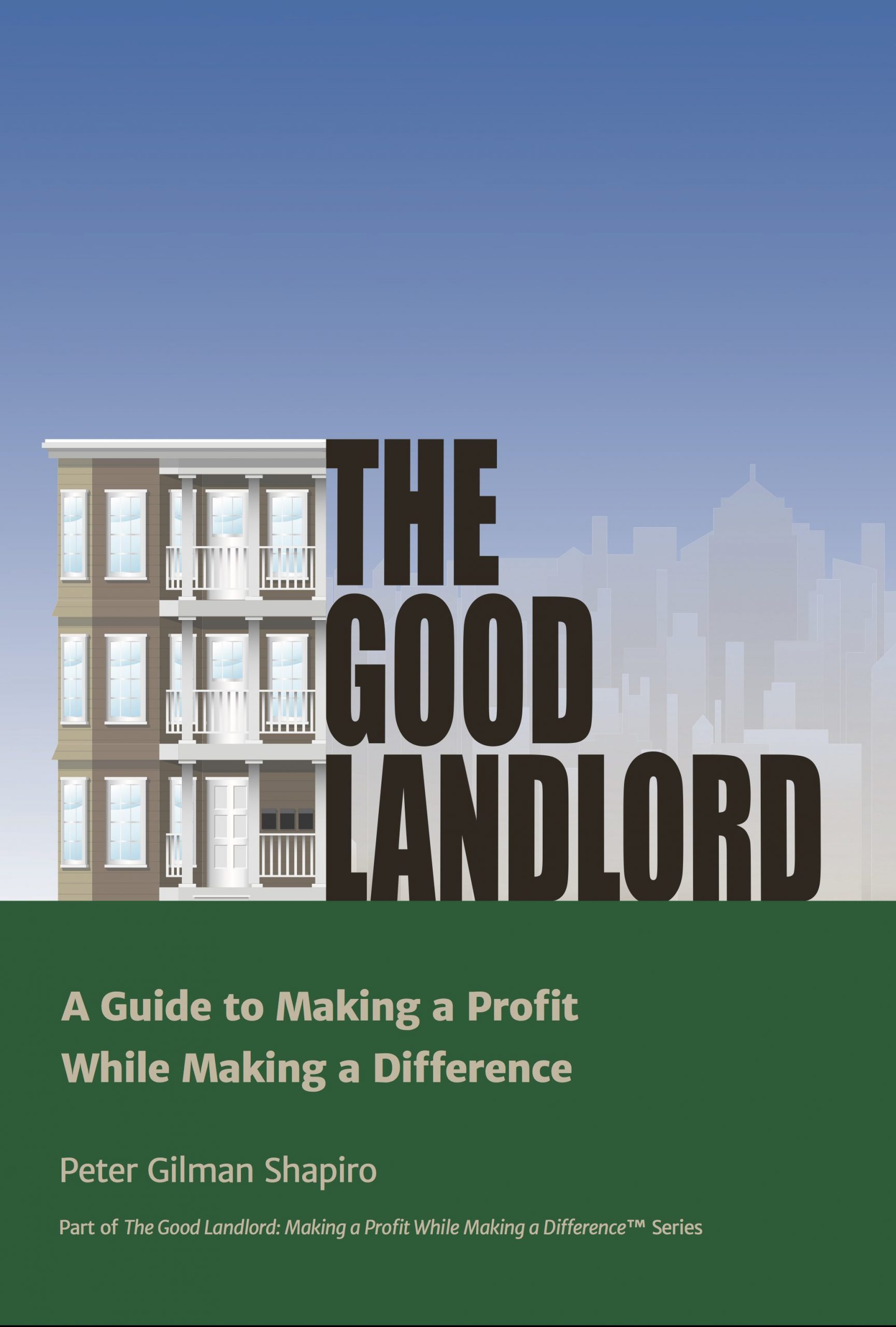
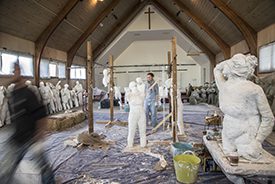
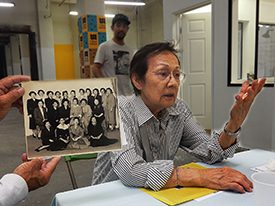
Comments